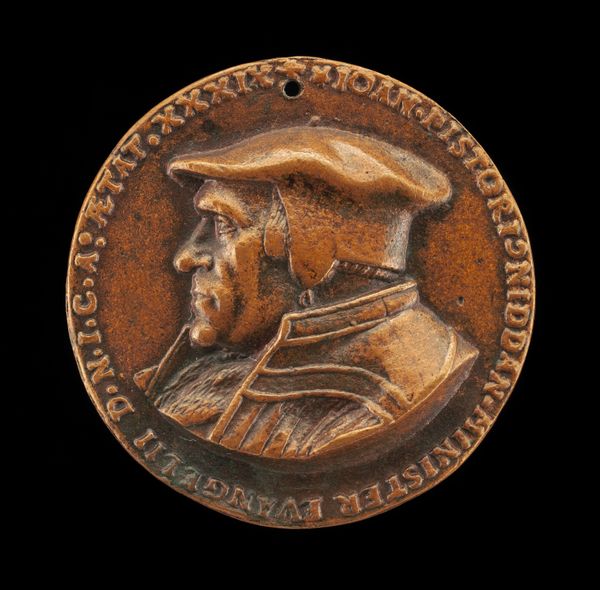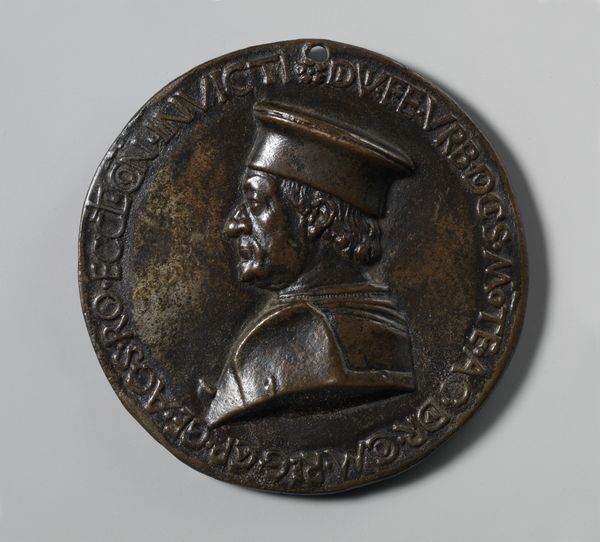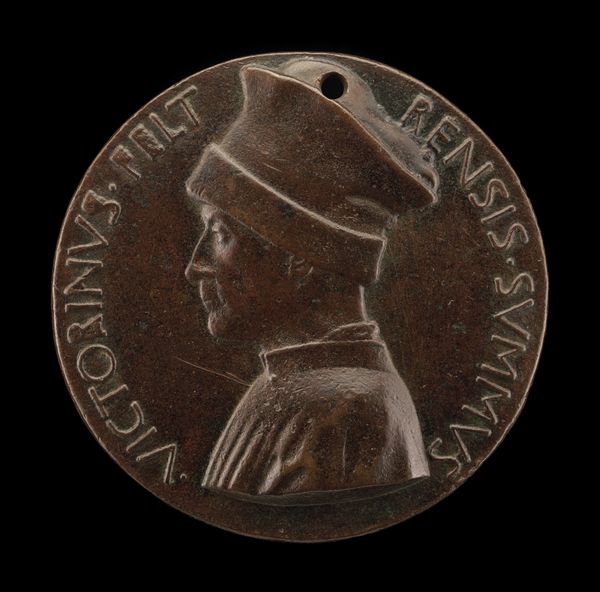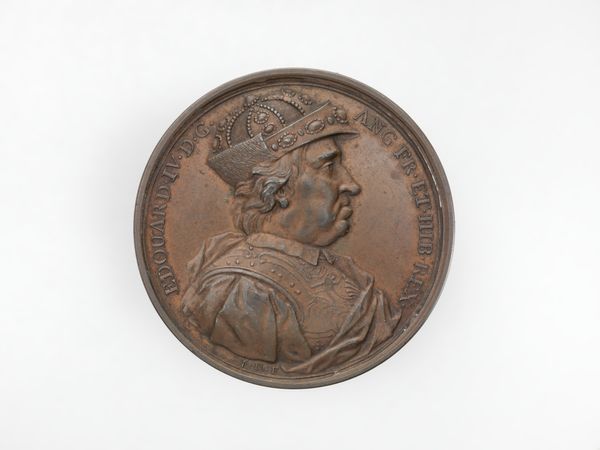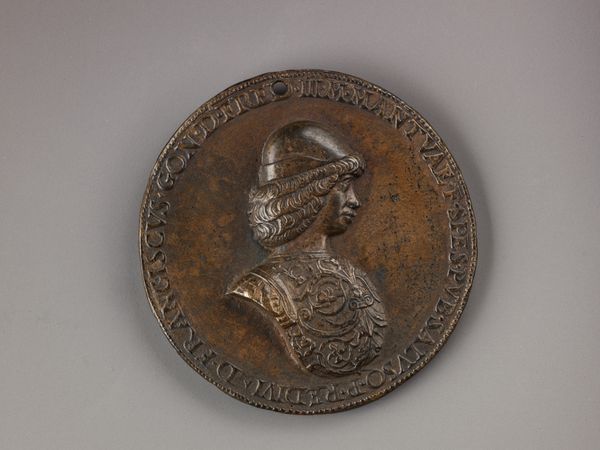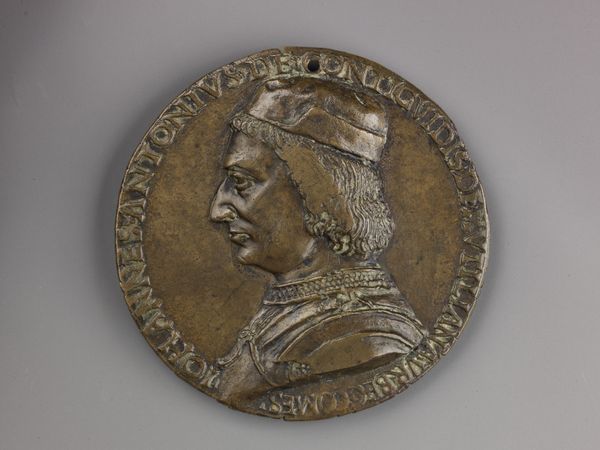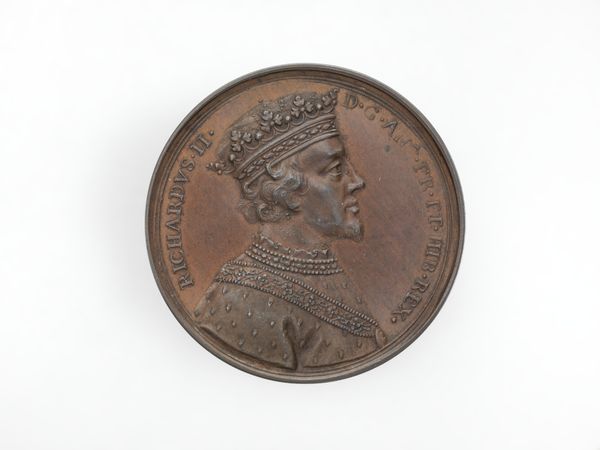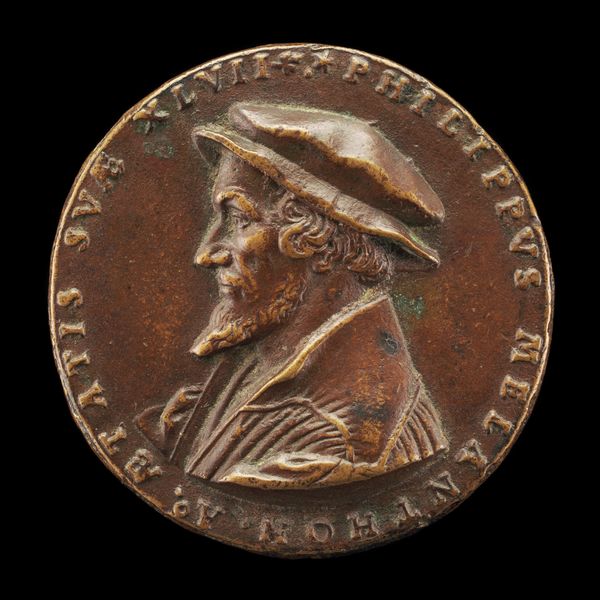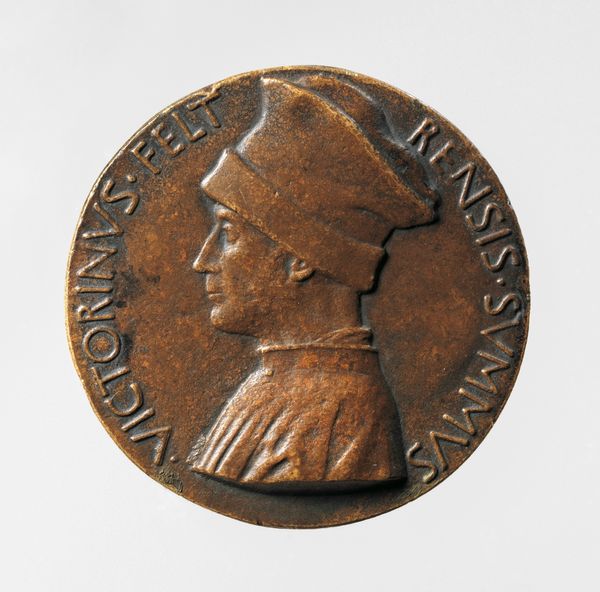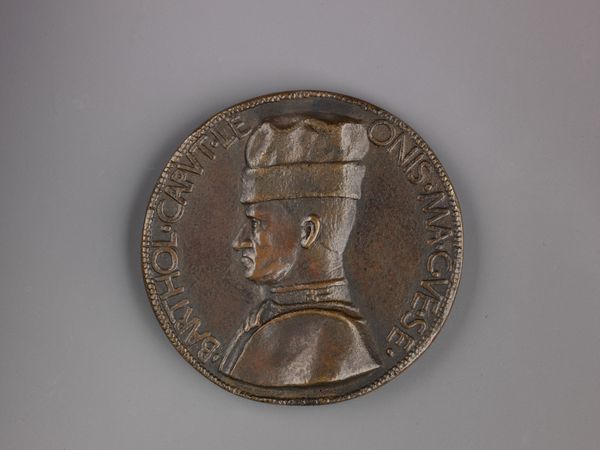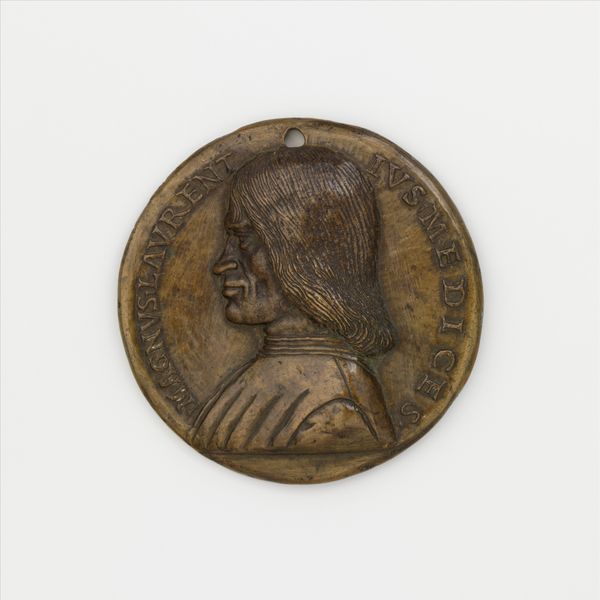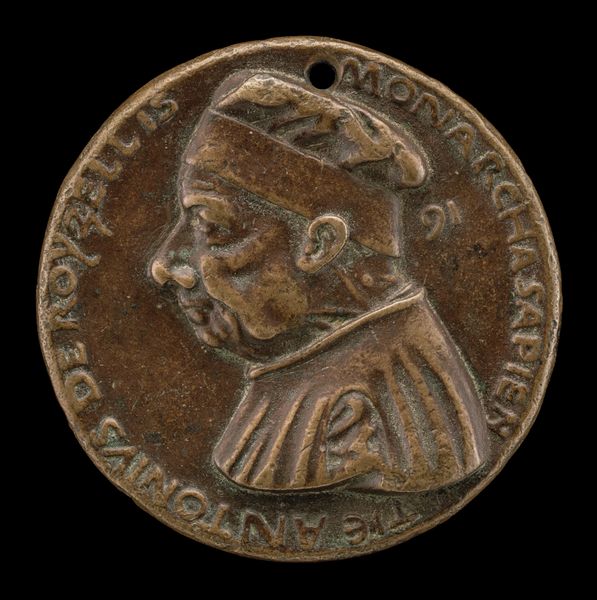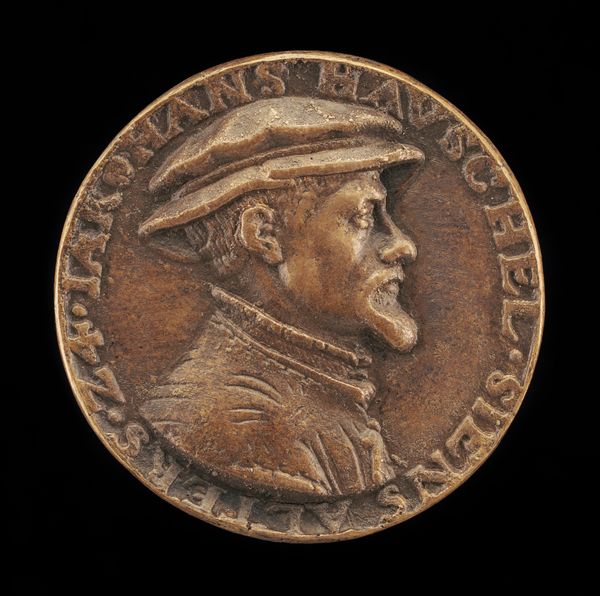
Portrait medal of Sultan Mehmed II (obverse); a Triumphal Chariot (reverse) 1480
0:00
0:00
bronze, sculpture
#
portrait
#
medal
#
sculpture
#
bronze
#
sculpture
#
italian-renaissance
Dimensions: Diam. 9.4 cm, wt. 321.66 g.
Copyright: Public Domain
Curator: Bertoldo di Giovanni, around 1480, crafted this bronze medal, its dual sides offering two distinct portraits, so to speak, of Sultan Mehmed II. Editor: It has this incredibly tactile quality, doesn’t it? I immediately want to touch it. The raised profile against the flat plane...it’s satisfying to observe how light plays across the contours of his turban and beard. Curator: Indeed. Medals like this were a way for rulers to disseminate their image and project power. On one side, we have Mehmed in profile, adorned with inscription, idealizing him as ruler of both Europe and Asia. The other, as you mentioned, shows a triumphal chariot, further emphasizing his military strength, most famously, taking of Constantinople. Editor: Note the incredible detail for such a small object. The textures are rich and distinct. Look at the difference between the smooth planes of his garment compared with the detailed treatment of his turban’s folds, or his softly modeled cheek. Curator: The Italian Renaissance was fascinated by classical antiquity, so Mehmed, eager to align himself with powerful leaders of the past, hired Italian artists. He was clearly trying to cement his place on the world stage. Editor: These details add layers of richness. For instance, look at the way di Giovanni created an allegorical visual relationship by pairing Mehmed’s bust on the front with the chariot scene of conquest. This side speaks of intellectual curiosity merging with strategic vision. The play of circles is compelling: the medal itself, his turban wrapping his face... Curator: These medals highlight cross-cultural exchange. Here, the Ottomans were very interested in leveraging European artistry. Yet, Europeans also portrayed him, a figure both respected and feared, for their own varied and political purposes. Editor: When looking at this piece, I think that these types of material forms can communicate cross-cultural ideals about global relationships and historical documentation in ways we might miss. Curator: Agreed, considering the material history—the bronze itself and its transformation—opens other perspectives of this remarkable moment in history.
Comments
No comments
Be the first to comment and join the conversation on the ultimate creative platform.

